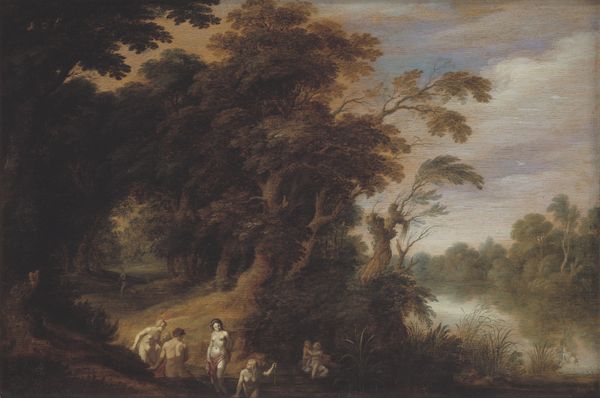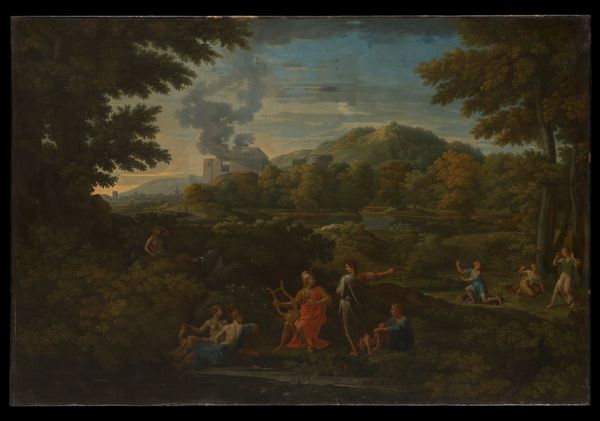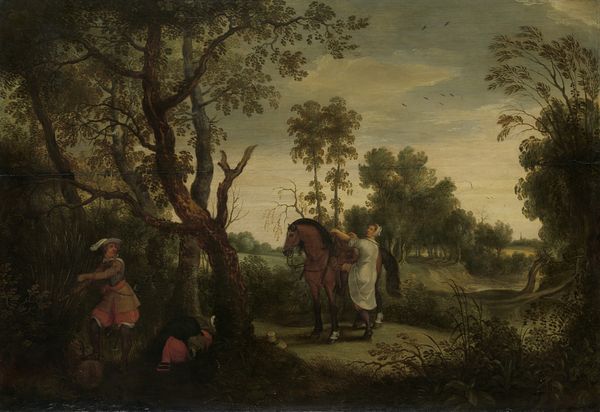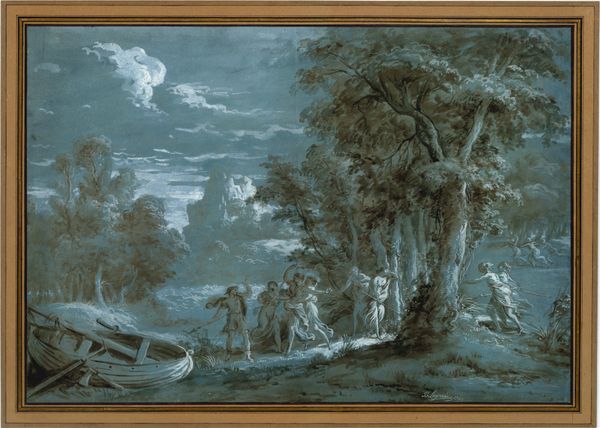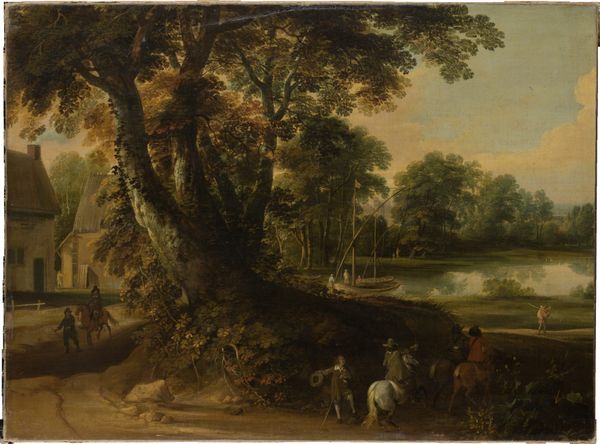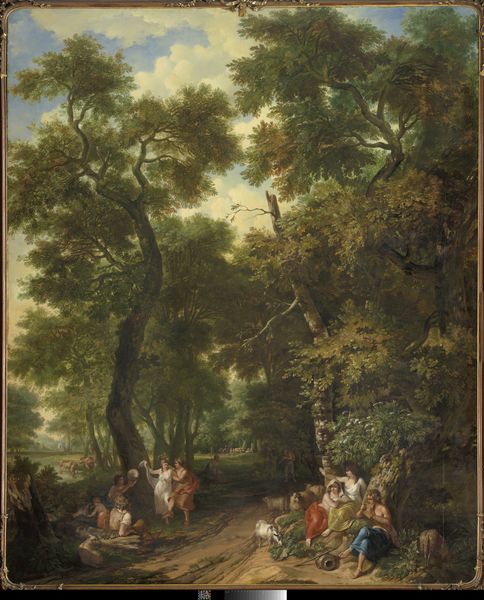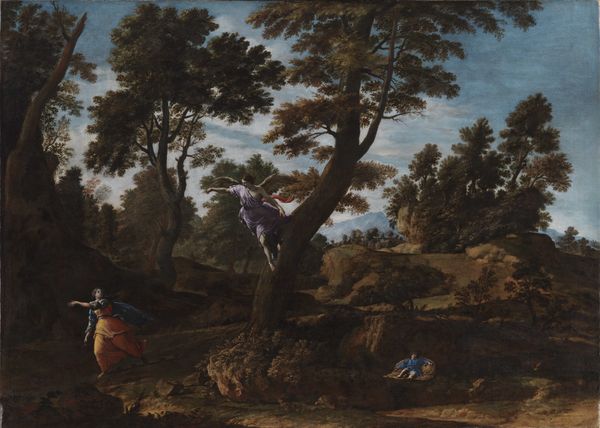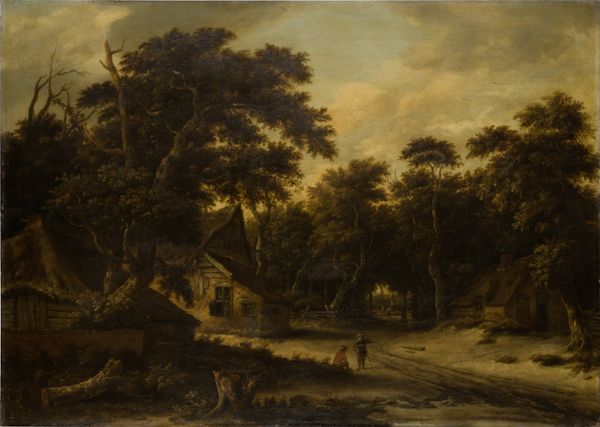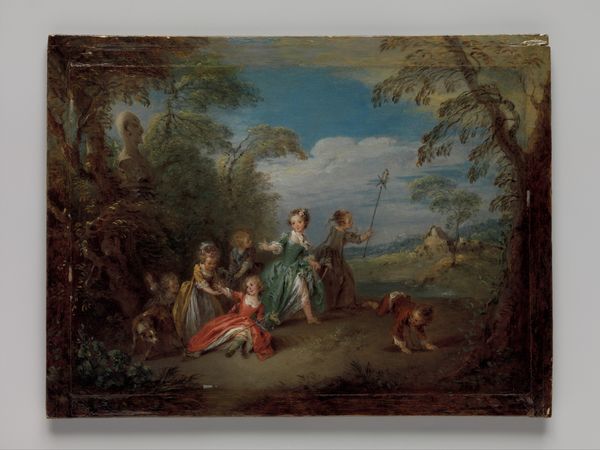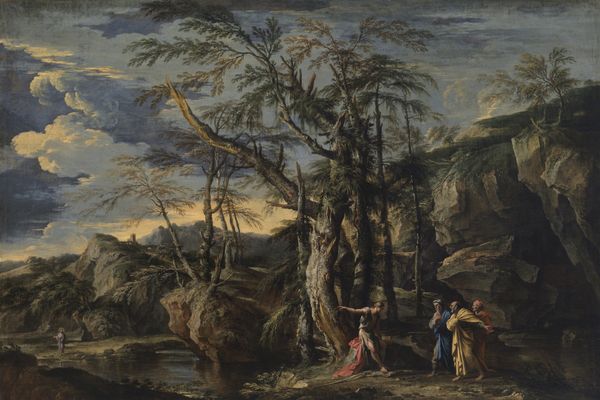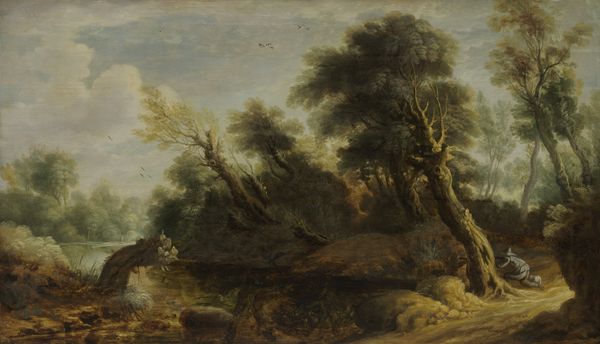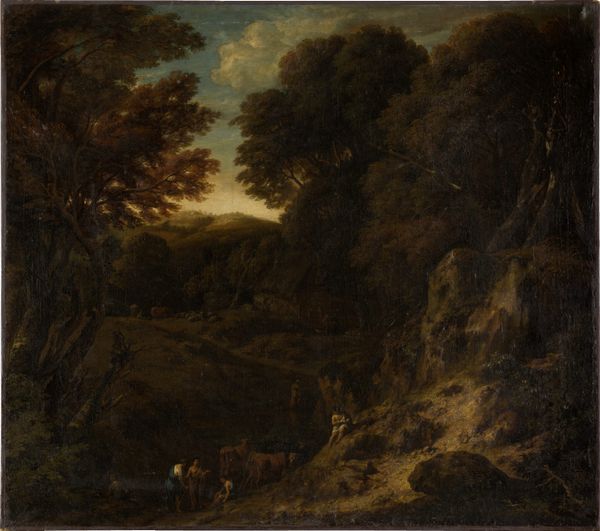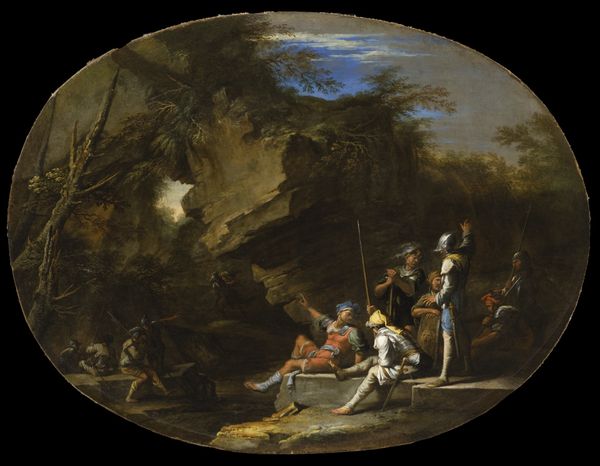
Måneskinslandskab med mytologisk (?) motiv 1623 - 1626
0:00
0:00
painting, oil-paint, wood
#
baroque
#
painting
#
oil-paint
#
sculpture
#
landscape
#
figuration
#
oil painting
#
chiaroscuro
#
wood
#
history-painting
Dimensions: 41.3 cm (height) x 66.2 cm (width) (Netto)
Curator: Looking at this nocturne by Moyses van Wtenbrouck, painted between 1623 and 1626, a "Moonlit Landscape with Mythological (?) Scene," what’s your initial reaction? Editor: Gloomy. Quite theatrical, really, with that stark contrast between the illuminated figures and the impenetrable darkness. It reminds me of a stage set, lit for dramatic effect. What can you tell me about Wtenbrouck's context here? Curator: He was part of a group of painters in the Netherlands who’d travelled to Rome and were absorbing Italian artistic styles. This particular painting is oil on wood and displays a keen awareness of dramatic chiaroscuro, so typical of the baroque period. Editor: Right. And the social element must be considered; this appropriation wasn’t a vacuum. It's also fascinating to note how materials influenced his palette, and subsequently the narrative; what wood did he select for this specific oil painting? The materiality adds another layer of depth. Curator: Unfortunately, the records don’t specify which type of wood panel he employed here, although technical analysis could probably ascertain the specific wood. What’s particularly intriguing is how the choice of rendering this almost history painting on such a domestic, humble surface such as wood would have affected its contemporary viewers. The museum clearly has chosen a telling title; the motif appears as uncertain. Editor: Uncertainty as part of the public reception! Absolutely. These choices reflect and reinforce contemporary political dynamics as well. It speaks to the democratization of viewing itself; here in Copenhagen, where it now resides. It challenges what “high” art really constitutes. Curator: I agree; it feels less like a grandiose history painting, and more like an intimate vignette into a mythical past. I'm captivated by the fact that he makes extensive use of oil paint to generate an entire night scene with all its modulations; very evocative of night and twilight atmospheres. Editor: Yes, and thinking about it further, consider the commodification of wood panels, which as materials, became accessible due to specific socioeconomic infrastructures present during that period. And the gallery space continues to evolve. What kind of access were the commoners of the 17th century allowed to art spaces? Curator: A relevant question! Perhaps the "commoners" saw prints instead. Thank you; thinking about the social underpinnings and modes of production really enrich the narrative here. Editor: Agreed. The intersection of material and societal factors opens up this moonlit landscape in really meaningful ways.
Comments
No comments
Be the first to comment and join the conversation on the ultimate creative platform.
